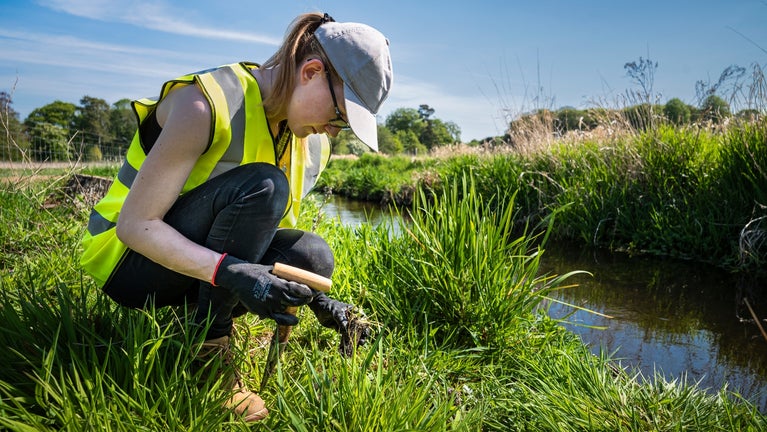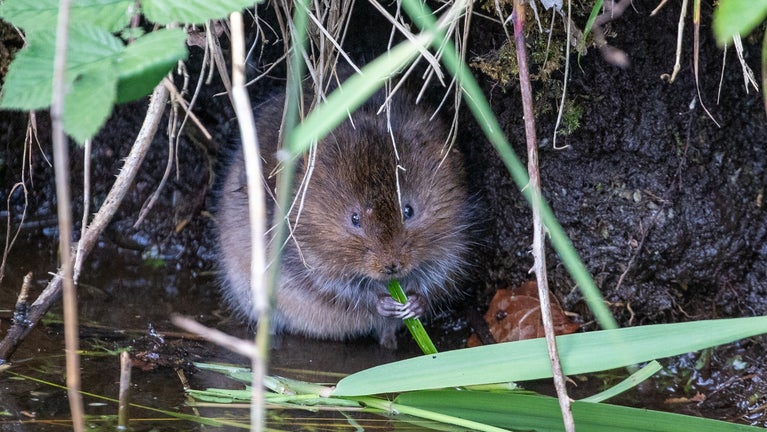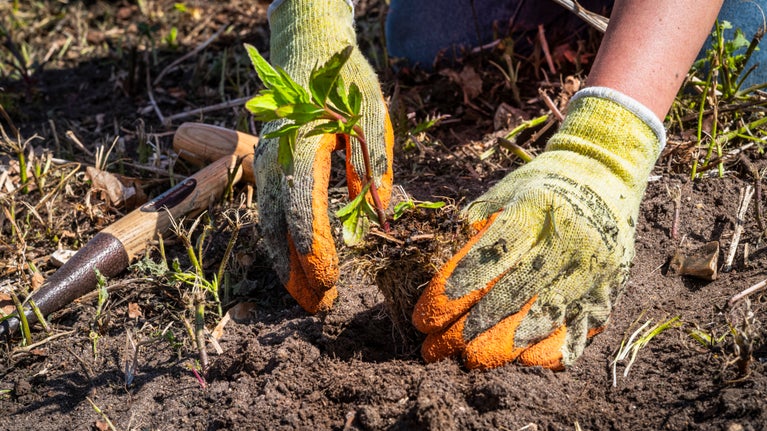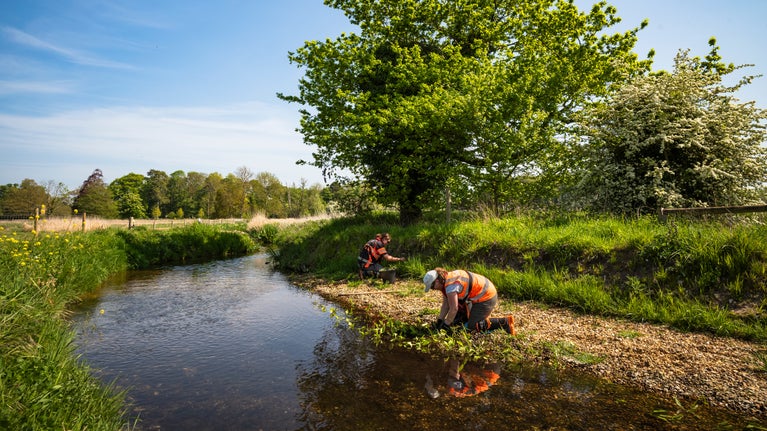Wildflowers planted on the banks of the River Gadder

Jump to
Following on from a £400,000 river restoration project, the National Trust, Anglian Water and Salix, have come together to plant 2,000 wildflowers on the banks of the River Gadder at Oxburgh Estate.
A rare chalk river
The River Gadder is one of England’s rare chalk rivers, which gets its crystal-clear water from underground chalk springs, making it an ideal habitat in which wildlife can thrive.
Water figwort, ragged robin, purple loosestrife and gypsywort have been planted along the riverbank, as part of erosion control efforts. Along the river margins, species such as marsh marigold, water mint, fool’s watercress, and water forget-me-not help filter pollutants, act as natural buffers, and provide vital habitats for wildlife.
Water voles and brown trout to benefit
National Trust Lead Ranger at Oxburgh, Thomas Day, said: “It’s been a real team effort, and this latest work will really improve the health of the river and surrounding habitat. A variety of wildlife will benefit from this vegetation, with the taller vegetation providing crucial cover and nest-building material for water voles, which are Britain’s fastest declining mammal.”
Water vole populations have declined by 90% due to habitat loss, fragmentation and becoming prey of the non-native American mink, according to wildlife charity People's Trust for Endangered Species (PTES).
Tom continued: “Water voles were spotted for the first time at Oxburgh last year, after several years of absence and it’s hoped more will return as a result of this work. The flowing water will also move the riverbed plants, stirring up silt and rejuvenating the habitat for fish - especially brown trout, which require well-aerated gravel beds for spawning.”

Native wildflowers
River restoration specialists, Salix, supplied the native plants and additional seed mix, as part of their ongoing commitment to being nature positive - restoring more habitat than is impacted by its operations.
The locally harvested seed mix was made up of a variety of bird’s-foot-trefoil, oxeye daisy, devils bit scabious, fleabane, meadowsweet, tufted hairgrass and meadow foxtail amongst other varieties, which was spread across the planting area.
David Holland, Managing Director, Salix River and Wetland, said: “As part of Salix’s ongoing commitment to being nature positive, we were delighted to return to the River Gadder to work with the National Trust and Anglian Water on this wildflower planting initiative.
“Not only was it a fantastic day, strong relationships like this are vital to achieving our shared environmental goals. We’re especially grateful to everyone who gave their time and energy to support the project. This enthusiasm and involvement are key to helping us meet our goal of planting 10,000 native plants each year across community projects.”

£400,000 river improvement works
The wildflower planting follows a £400,000 improvement project, completed last year by Anglian Water, in partnership with Binnies and Salix. The project, which took place at the National Trust’s Oxburgh Estate on the River Gadder, aimed to restore original features within the watercourse, improving the health of the river.
This work involved installing berms, gravel placement, flood plain reconnection, and ‘remeandering’ the river to restore its original curves and bends.
This investment formed part of Anglian Water’s £800 million environmental investment programme between 2020 and 2025. The company has now begun work on its new environmental investment programme, worth £1.8 billion, which forms part of its largest ever business plan, with £11 billion set to be invested in the East of England’s water and sewerage infrastructure by 2030.
James Brokenshire-Dyke, Environmental Project Manager at Anglian Water, said: “We’re really pleased to be able to support Salix and the National Trust with this wildflower planting on the River Gadder, especially following the river restoration work that took place last year. Keeping rivers healthy and thriving is a top priority for us and our customers, and partnership working is a crucial part of this, so it’s great to be able to improve the River Gadder’s biodiversity with these new wildflowers.”
Visitors to Oxburgh Estate can expect to see some of the wildflowers begin to bloom from late summer, with more expected next year.
